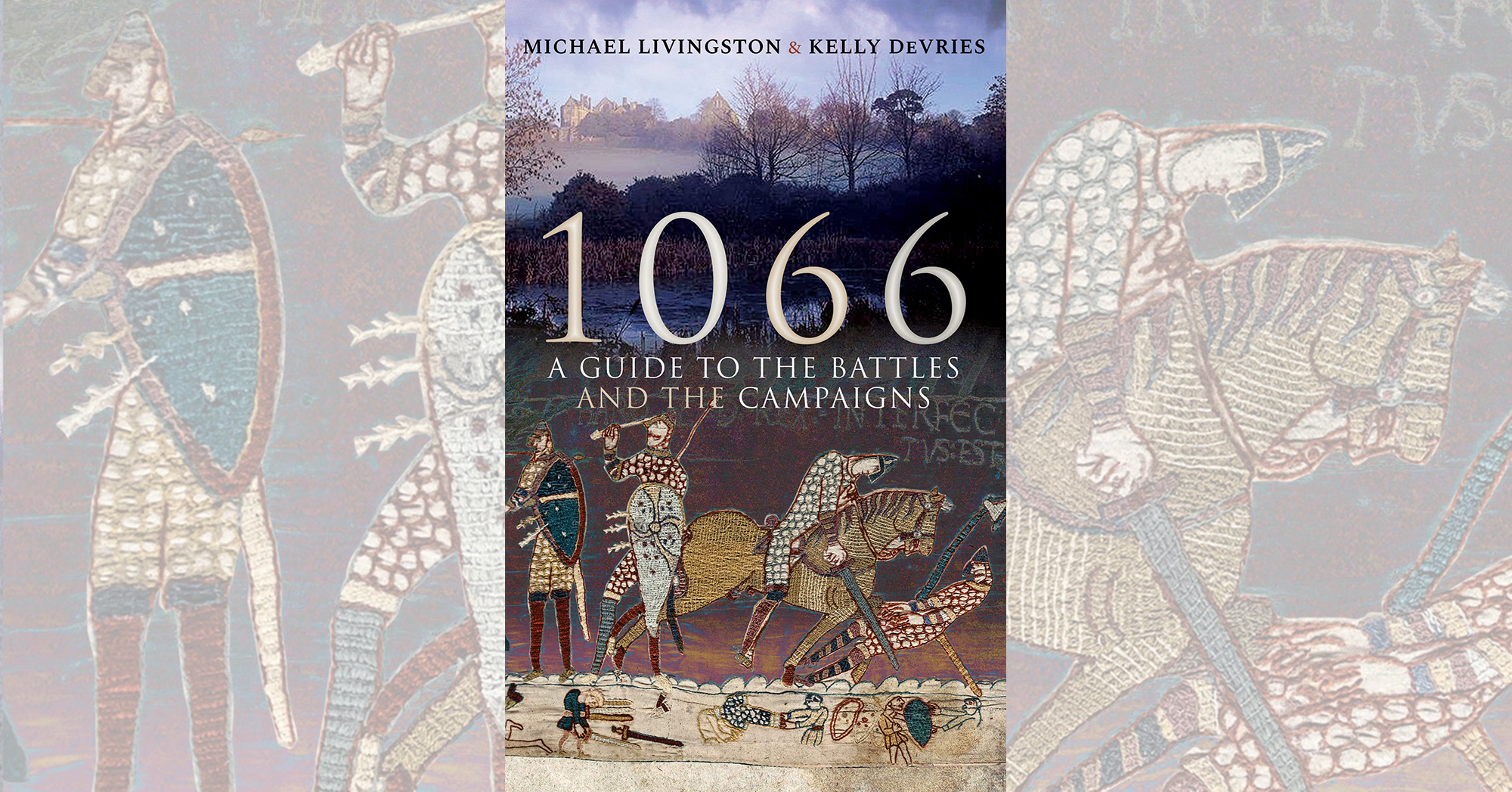1066: A Guide to the Battles and the Campaigns, by Michael Livingston and Kelly DeVries, Pen and Sword Military, Barnsley, U.K., $24.95
American military historians Michael Livingston and Kelly DeVries present a lavishly illustrated and authoritatively written guidebook detailing the battles and campaigns of the most decisive year in British history. Drawn from a series of Medieval Warfare magazine articles published in 2017, 1066 is supported by a compact bibliographic essay, a thorough index, six maps and 107 illustrations. These last include on-site photos taken by the authors as well as 32 images from the Bayeux Tapestry (really an embroidery), the 230-foot-long 11th century epic scroll that depicts the Norman conquest, culminating with the Battle of Hastings.
Following an introductory chapter on the history of Anglo-Saxon England, the five chapters relate the course of the 1066 campaign with narrative text and a related tour itinerary. The tours support the theme of each chapter, starting with Norman sites associated with William the Conqueror (including Falaise and Caen) and continuing to places tied to English traitor (and brother to King Harald Godwinson) Tostig, who led the Norwegian Vikings to their monumental defeat at Stamford Bridge outside York. Next follow the Norman landing site on the southern English coast at Pevensey, nearby Hastings battlefield and Battle Abbey, and, finally, William’s victorious march via Dover to London, culminating with his coronation on Christmas Day. Throughout text blocks address such period topics as “consanguinity” and “oath-breaking.”
The authors argue that prior to Hastings, the most famous battle in English history was the largely forgotten triumph of King Athelstan over the Vikings, Scots and Britons at Brunanburh in 937, noting that the latter was fought for the existential survival of England while the former was an act of political vengeance that ended it. They also examine the overshadowed victory at Stamford Bridge that September, where the combatant armies (numbering some 13,000 each) were twice the size of those at Hastings a month later. Despite minor errors, such as misdating the reign of Kings Alfred the Great and Ethelred the Unready, this well-designed book is a delightful addition to the body of literature on the Norman conquest.
—William John Shepherd
This post contains affiliate links. If you buy something through our site, we might earn a commission.





